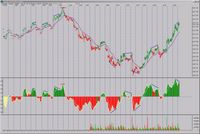NEW YORK (Dow Jones)--While Treasury yields have been on the decline
of late, the Bond Market Association's latest primary dealer survey
shows the downturn is expected to be short-lived.
Not only are yields forecast to rise, but the benchmark 10-year
note's yield is seen moving all the way up to levels not seen since
June 2002. According to the survey, released Monday, the yield on the
10-year Treasury note will rise to 4.75% by the end of June, and to 5%
by the end of September. That ranslates into a half-percentage-point
increase over the next two months.
The BMA president, Micah S. Green said in a press release that
"sustained U.S. economic growth and the series of 'measured' rate
increases by the Federal Reserve," will drive rates higher. He noted,
however, that even at 5%, the yield on the 10-year note would still be
"historically low."
When Fed Chairman Alan Greenspan famously deemed long-term yields a
"conundrum" in mid-February, the 10-year Treasury note was yielding
about 4.08%. After peaking at 4.69% in late March amid concerns that
prices pressures were on the rise, the 10-year yield has come all the
way back down to around 4.25%, having dipped as low as 4.19% in trade
Monday.
A quarter-percentage-point of that falloff came in the last week
alone, amid tepid retail sales data and minutes from the Fed's last
policy-setting meeting that didn't reveal immediate plans for
stepped-up rate hikes.
Since it started tightening monetary policy in June 2004, the Fed
has raised rates in seven consecutive quarter-percentage-point
increments, taking the target federal-funds rate to 2.75% from 1%. Fed
officials have repeatedly stated that the pace of future increases is
expected to remain gradual, provided inflation remains contained,
until the target fed-funds rate is at a level that neither stimulates
nor constrains economic growth.
It's unclear as to what a so-called neutral rate would be, though it
is widely believed to be somewhere between 3% and 5%.
The BMA's survey also predicts yields on shorter-dated maturities
will rise at roughly the same pace as long-dated yields, meaning the
yield curve - which measures the difference between short- and
long-term yields - will start to stabilize.
Since beginning the year around 1.16 percentage points, the
benchmark yield curve flattened to as low as 0.67 percentage point
last week. Mid-afternoon Monday it was trading around 0.71 percentage
point.
Separately, the survey forecasts the federal budget deficit for
fiscal-year 2005 will fall to 8.4% from a year earlier to $375
billion.
"Consistent with other forecasts, our survey respondents also
believe the deficit should continue to recede in fiscal 2005,
primarily due to higher tax revenues typical of rising corporate
profits and economic growth," the Bond Market Association's Green
said.
The survey, conducted the week beginning April 1, is issued on a
quarterly basis and reflects the forecasts of primary dealers, or
banks that deal directly with the Federal Reserve. It was
The Bond Market Association has offices in New York, Washington and
London, and represents securities firms and banks that underwrite,
trade and sell debt securities globally.



